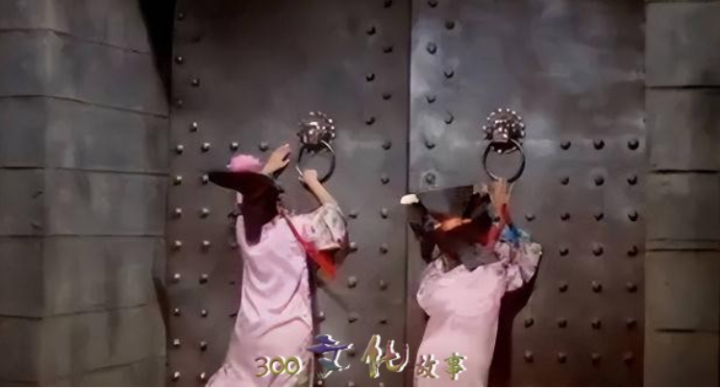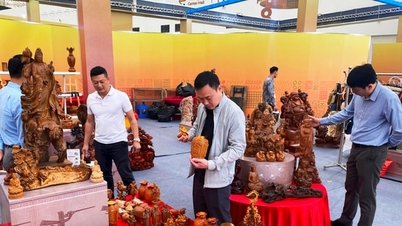In the burial regulations of ancient Chinese emperors, martyrdom was the most cruel custom. Palace maids and concubines would be buried alive with the deceased emperor. The purpose of this custom was so that the deceased, even in the afterlife , would still have servants and attendants just like when they were alive.
According to Jueshifan , the custom of sacrificial burial appeared during the Zhou Dynasty. During this period, the people chosen for sacrificial burial were slaves and prisoners of war. Later, during the feudal period, the emperors abused it, not only slaves but also concubines were buried with the king when he died.
By the time of Qin Shi Huang, the custom of martyrdom was considered to be at its "peak", the number of remains buried with him in the mausoleum until now has not been accurately counted, it can be said that it is impossible to count.

The number of concubines forced to be buried with Qin Shi Huang is countless. (Illustration: Sohu)
During the reign of Emperor Wu of Han, this custom was abolished because the monarchs realized its barbarity. Instead of burying people alive, people at that time turned them into human figures or animals. But at the beginning of the Ming Dynasty, Zhu Yuanzhang revived the custom of sacrificial burial and it became a funeral custom in the royal family. After his death, 46 concubines were forced to be sacrificially buried with him. It was not until Emperor Yingzong of Ming ascended the throne that he issued an edict abolishing the practice of sacrificial burial of concubines.
This practice did not last long. Early in the Qing Dynasty, Emperor Taizu Nurhaci ordered the burial of his empress and four concubines upon his death. Later, Emperor Taizong included the names of some of his concubines in the burial list. It was not until the Kangxi period that the practice of burying the living was completely abolished.

Those chosen for burial were mostly concubines without children and without support. (Illustration: Sohu)
So in ancient China, what did the concubines chosen to be buried with the emperor have to prepare beforehand?
In fact, most of the concubines chosen to be buried with the emperor were childless or had no support. Many historians described the scene when they were assigned to be buried as extremely tragic: “The sound of their cries shook the heavens and earth, and anyone who happened to hear them was scared out of their wits.”
Upon receiving the edict, the chosen person would meet with their family and relatives. They would then spend days in mourning for the deceased emperor before the burial. During this time, they were forced to perform certain tasks to maintain their appearance. The purpose of this was to make the emperor happy in the afterlife.

On the day of burial, the concubines had to dress up in their finest to be buried with the emperor. (Illustration: Sohu)
When the day of burial comes, the concubines and palace maids will have to dress up in their finest clothes and bring their most precious jewelry. In addition, they can bring their most cherished items such as souvenirs, paintings, and books.
There were many ways to force concubines to be buried with the Emperor. Among them, drinking poisoned wine was considered a way that did not harm the appearance of the concubines. People believed that drinking poisoned wine would help preserve their bodies best. In addition, hanging or pouring mercury were also commonly used methods when burying them with the Emperor.
Those who were buried alive were starved for several days beforehand to avoid overreacting when placed in the tomb. At this point, the concubines had lost the strength to resist and could only obediently submit to fate.
Burial is a cruel and brutal custom. It deprives concubines and palace maids of their right to live just for the sake of enjoyment and greed for power of the ruling class. Therefore, when later generations realized its backwardness, the custom of burial was eliminated from the flow of history.
Quoc Thai (Source: Sohu)
Useful
Emotion
Creative
Unique
Wrath
Source





![[Photo] Prime Minister Pham Minh Chinh receives United Nations Secretary-General Antonio Guterres](https://vphoto.vietnam.vn/thumb/1200x675/vietnam/resource/IMAGE/2025/10/25/1761390212729_dsc-1484-jpg.webp)
![[Photo] National Assembly Chairman Tran Thanh Man receives United Nations Secretary-General Antonio Guterres](https://vphoto.vietnam.vn/thumb/1200x675/vietnam/resource/IMAGE/2025/10/25/1761390815792_ctqh-jpg.webp)
![[Photo] Prime Minister Pham Minh Chinh and United Nations Secretary-General Antonio Guterres attend the Press Conference of the Hanoi Convention Signing Ceremony](https://vphoto.vietnam.vn/thumb/1200x675/vietnam/resource/IMAGE/2025/10/25/1761391413866_conguoctt-jpg.webp)

















![[Photo] General Secretary To Lam meets with General Secretary and President of Laos Thongloun Sisoulith](https://vphoto.vietnam.vn/thumb/1200x675/vietnam/resource/IMAGE/2025/10/25/1761380913135_a1-bnd-4751-1374-7632-jpg.webp)













































































Comment (0)